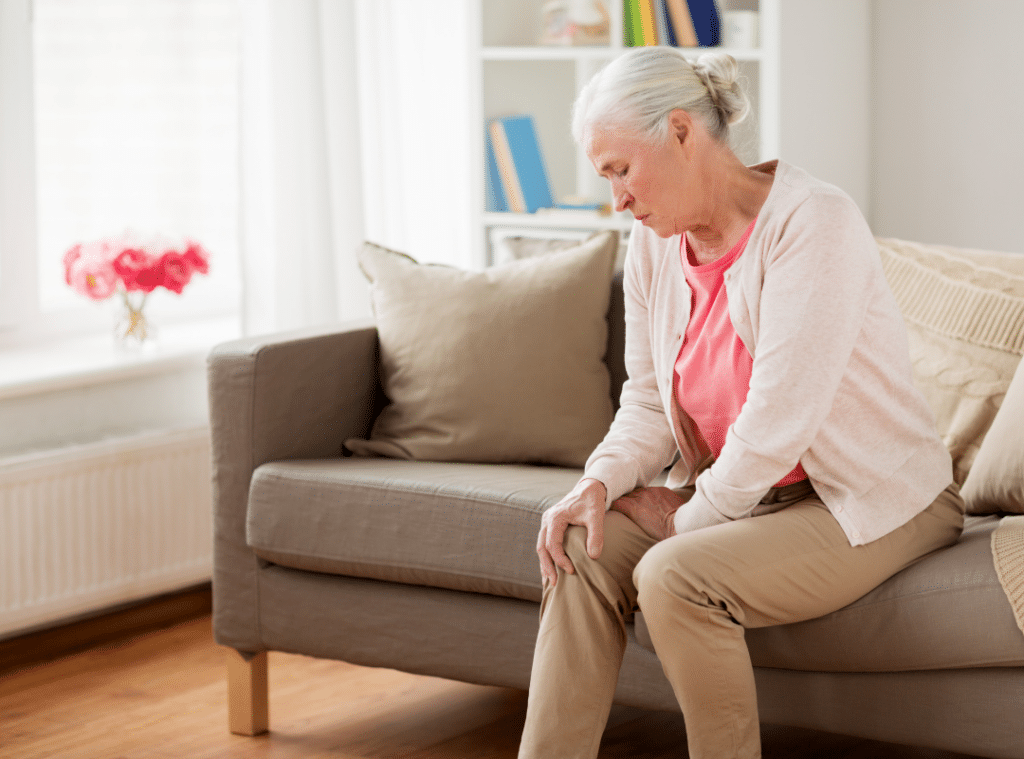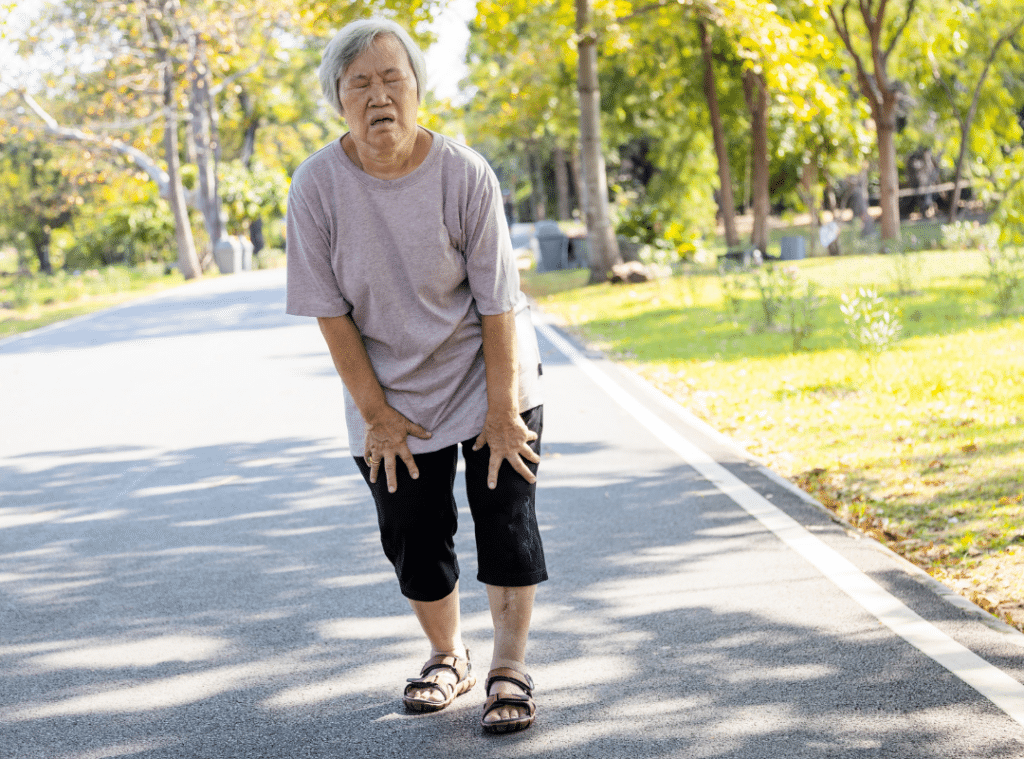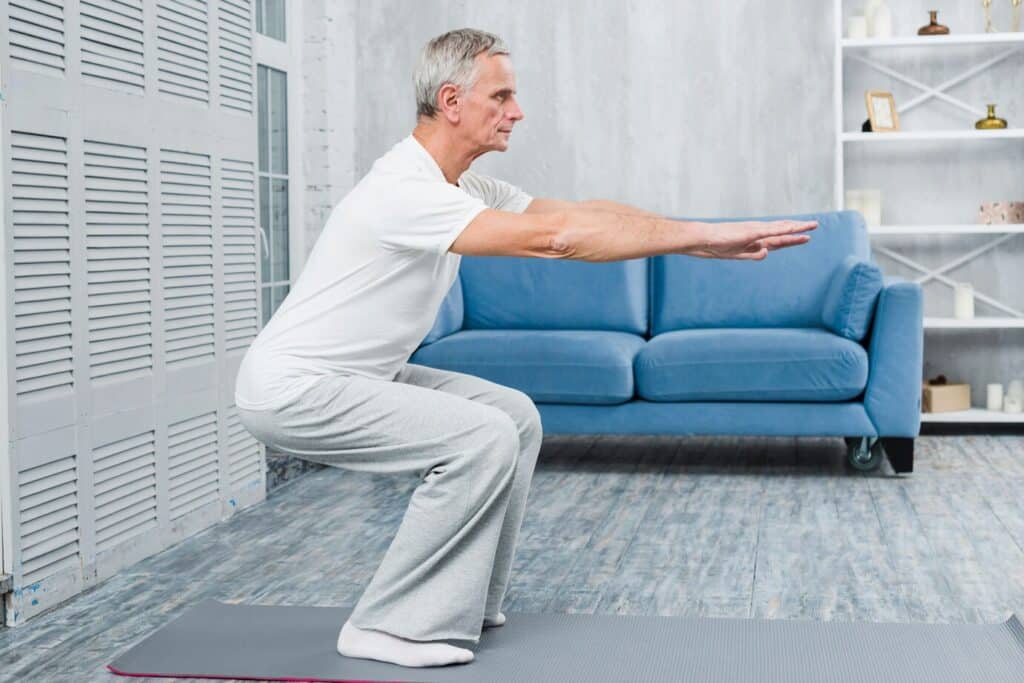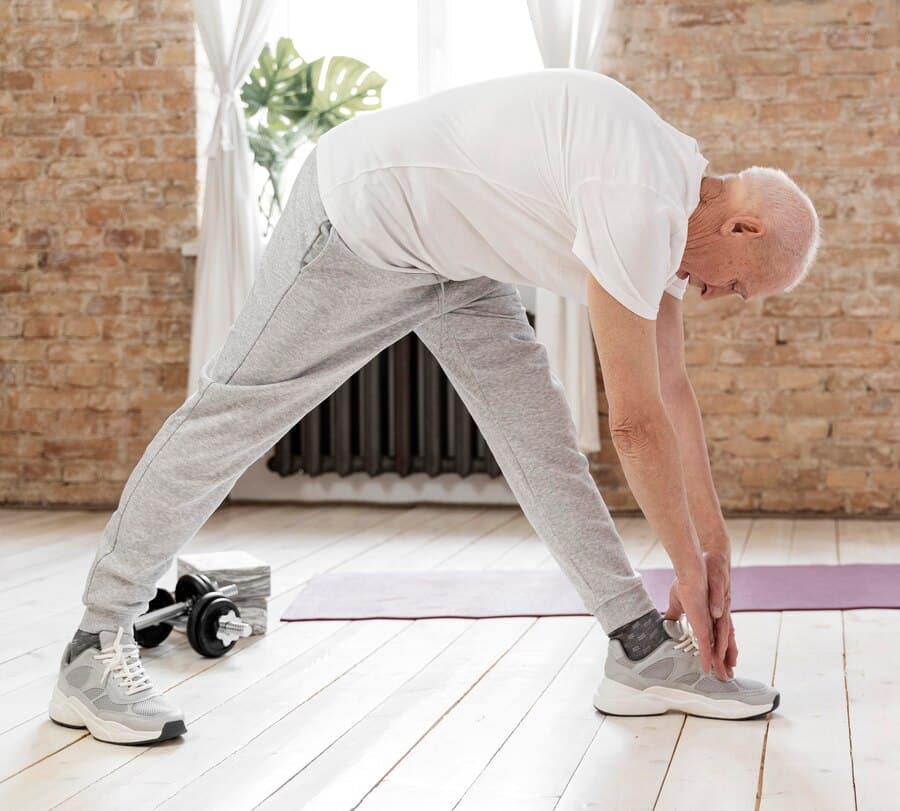Weak legs in elderly individuals can profoundly impact their quality of life, challenging everyday activities. Understanding what causes sudden leg weakness in elderly individuals, including muscle atrophy, nutritional deficiencies, and medical conditions, is essential to addressing the issue effectively.
At Westmont Living, we emphasize proactive approaches such as regular physical activities and dietary adjustments tailored to seniors’ unique needs. Ensuring a well-balanced diet rich in essential nutrients helps enhance muscle strength and overall mobility, significantly benefiting elderly loved ones.
Understanding the Causes of Weak Legs in Seniors
Identifying the root causes of weak legs in elderly individuals allows for targeted interventions to maintain their independence. Muscle atrophy, which accelerates with age, significantly contributes to leg weakness. Additionally, nutritional calcium, magnesium, and vitamin D deficiencies further exacerbate muscle deterioration. Cardiovascular issues and certain medications leading to low potassium levels also impact muscle health.
Addressing these issues through a comprehensive approach that includes balanced nutrition and regular exercise can greatly alleviate symptoms. Emphasizing dietary protein, calcium, potassium, and magnesium intake, supplemented by proper hydration, strengthens muscles and bones, enhancing senior mobility. More details on nutritional impacts can be found in this helpful guide.
Recognizing Sudden Leg Weakness and When to Seek Help
When an elderly individual experiences sudden weak legs, immediate evaluation is crucial as it may indicate serious health conditions such as stroke, neurological disorders, or nerve compression. Promptly seeking medical care can significantly improve outcomes.
Symptoms such as sharp pains, tingling sensations, or loss of motor control require urgent attention. Families should familiarize themselves with emergency protocols and educate elderly loved ones about reporting sudden changes in their health promptly. Additional insights can be found in care options for elderly individuals.
Encouraging Regular Exercise for Strengthening Legs
Regular, low-impact exercise routines significantly improve leg strength and mobility in elderly individuals, reducing the risk of falls and enhancing daily functionality.
Safe Exercise Routines
Elderly-friendly exercises such as chair yoga, ankle circles, and seated leg raises provide safe and effective methods to build muscle strength. Integrating resistance bands into exercise routines enhances muscle development while minimizing joint stress. Exercises should gradually increase in intensity to match individual abilities, and families should encourage consistency to maximize effectiveness. For additional exercises, refer to this dynamic balance exercise guide.
Importance of Consistency
Consistency in exercising significantly contributes to muscle strength, endurance, balance, and overall health. Establishing a routine ensures long-term adherence, making fitness an integral part of daily life for elderly individuals.
- Builds muscle strength effectively.
- Enhances balance to prevent falls.
- Increases endurance, making daily tasks easier.
- Creates habits, promoting ongoing mobility.
Overcoming barriers like fatigue or motivation through family support helps sustain these benefits over time. Further tips on maintaining consistency can be accessed in physical therapy guidance.

Nutritional Strategies to Support Muscle Health
Diet significantly influences leg strength and overall muscle health. Ensuring elderly individuals receive vital nutrients through their diet helps combat weak legs in the elderly.
Essential Nutrients Overview
Proper intake of essential nutrients such as proteins, calcium, vitamin D, and potassium is crucial for maintaining muscle and bone strength.
- Protein helps muscle repair and growth.
- Calcium strengthens bones, supporting muscle structure.
- Vitamin D facilitates calcium absorption.
- Potassium supports nerve and muscle function.
Regularly incorporating these nutrients combats muscle weakness effectively.
Meal Ideas and Tips
When exploring what to eat for weak legs in the elderly, consider nutritious meals including lean proteins (fish, chicken), legumes, nuts, dairy, fruits, and vegetables. Snacks like yogurt, nuts, and vegetable dips provide sustained daily nutrition, enhancing muscle health.
Incorporating Key Foods for Optimal Nutrition
Including key foods helps ensure elderly individuals achieve optimal nutrition to support leg strength and overall health effectively:
- Fatty fish (salmon, tuna) provide omega-3s and proteins.
- Legumes and lentils offer plant-based proteins.
- Nuts and seeds contain healthy fats and essential minerals.
- Fruits and vegetables deliver crucial vitamins, calcium, and potassium.
Integrating these foods into daily diets promotes muscle health and vitality, significantly improving mobility.
Home Care Tips for Monitoring Mobility
Regular mobility monitoring helps families quickly identify and address declines in leg strength. Activities like balance training, observing gait patterns, and creating a safe home environment can substantially reduce fall risks.
Routine assessments and active monitoring assist in recognizing and promptly addressing sudden weak legs in the elderly.
Collaborating With Healthcare Providers for Personalized Plans
Collaboration with healthcare professionals is vital in devising effective treatment for weak legs in the elderly. Personalized plans developed through regular check-ups and health assessments address specific nutritional, exercise, and medical needs, ensuring comprehensive care and optimized outcomes.
- Schedule routine assessments.
- Adjust diets for better muscle health.
- Implement tailored exercise regimens.
- Engage physical therapists for specialized guidance.
Regain Independence: Empower Seniors Against Leg Weakness
Addressing weak legs effectively enhances independence, reduces fall risks, and improves seniors’ quality of life. Approximately 30% of seniors experience falls annually, often due to untreated leg weakness. By combining nutrition, consistent exercise, proactive monitoring, and personalized healthcare interventions, families can empower their elderly loved ones to live actively and independently.
For personalized guidance and care, contact Westmont Living at 858-456-1233 or visit us at Westmont Living Communities.
How Do The Costs Of Moving Into A Quality Senior Care Community Compare With The Costs Of Staying At Home?Compare The Costs of Senior Living vs Staying at Home
Frequently Asked Questions About Weak Legs in the Elderly
Why are my legs so weak that I can barely walk?
Weak legs can be caused by a combination of aging, reduced physical activity, poor circulation, or underlying health conditions like arthritis, neuropathy, or stroke. In elderly individuals, muscle loss (sarcopenia) is a common contributor. If leg weakness is sudden or severe, it’s important to consult a healthcare provider for a proper diagnosis. Addressing the root cause early can help improve mobility and prevent further decline.
How do you treat weak legs in the elderly?
Treatment for weak legs typically involves a combination of physical therapy, strength training, and nutritional support. Low-impact exercises, like walking, swimming, or resistance band workouts, can help rebuild muscle safely. A doctor may also review medications or medical conditions that contribute to muscle weakness. In some cases, mobility aids and home modifications may also be recommended for safety.
What medication is good for leg weakness?
There isn’t a one-size-fits-all medication for leg weakness; the right treatment depends on the underlying cause. For example, B12 supplements may be prescribed for nerve-related weakness, or anti-inflammatory drugs might help if arthritis is involved. Muscle relaxants or nerve pain medications can be used when appropriate, but always under a doctor’s supervision. A full medical evaluation is essential before starting any treatment.
Can elderly regain leg strength?
Yes, many elderly individuals can regain leg strength with the right care and persistence. Physical therapy and regular, gentle exercise can lead to noticeable improvements in strength and balance over time. Nutritional support and proper hydration also play an important role. While progress may be gradual, consistent effort can significantly enhance mobility and independence.









